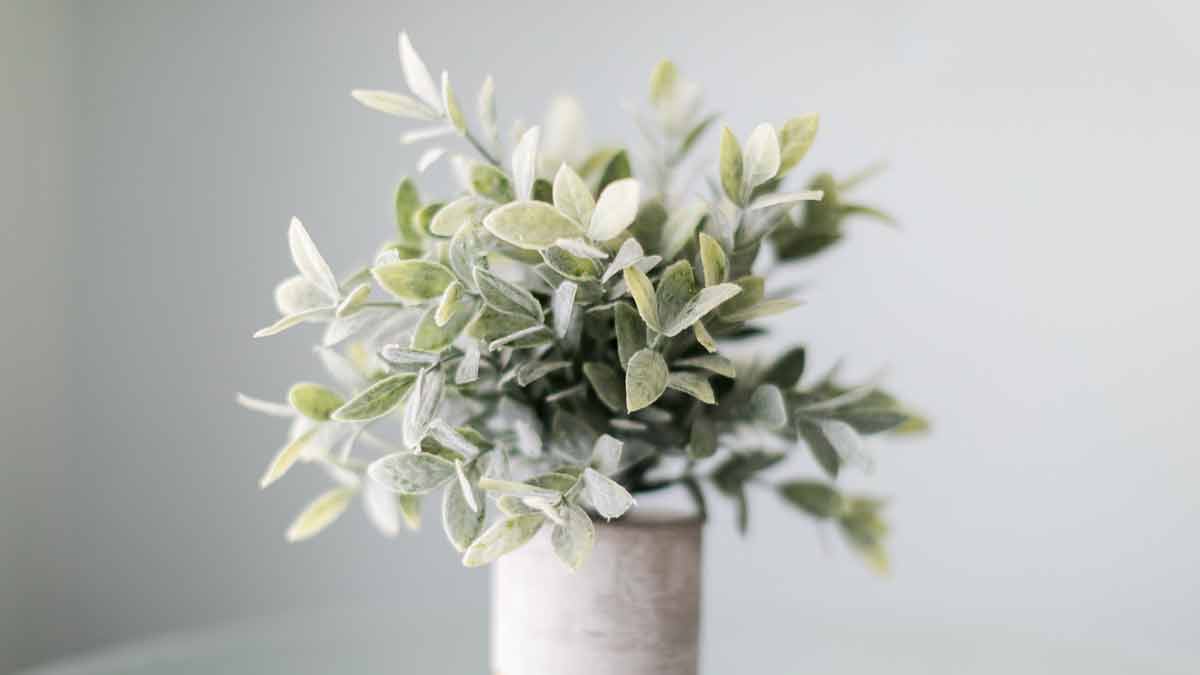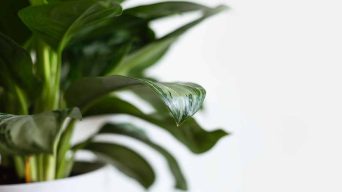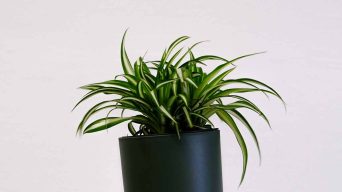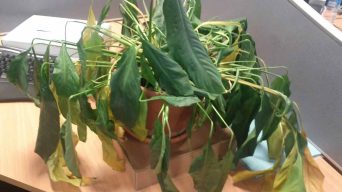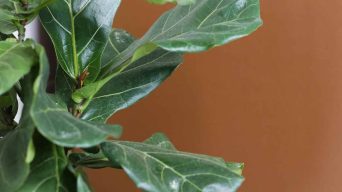Plant leaves turning white can be due to various reasons, such as lack of chlorophyll production, fungal diseases like powdery mildew, nutritional insufficiency, bacterial growth, and environmental factors like sun scorch. Some solutions include controlling powdery mildew and providing the plant with proper light, nutrients, and environment.
Houseplants are a great way to add some life and color to your home, but they can also be a source of frustration when they start to experience problems.
One common issue that houseplants can experience is leaves that turn white.
There are several possible reasons why this might be happening to your plant.
But don’t despair; there are also several solutions that you can try!
Here are 7 possible reasons why your houseplant leaves are turning white and what you can do about it.
Why Are My Indoor Plant Leaves Turning White?
There are a few possible reasons why the leaves on your indoor plants might turn white.
It could be due to disease, pests, or even a nutrient deficiency.
Here are some of the most common reasons your houseplant leaves might turn white.
1. Powdery Mildew
One possibility is that your plant has powdery mildew.
Powdery mildew is a type of fungal disease that can affect a variety of plants, both indoors and outdoors.
This disease is characterized by a white, powdery substance that appears on the leaves and stems of the plant.
This powder is made up of spores that the fungus produces.
Powdery mildew is often caused by too much humidity or not enough airflow around the plant.
How To Tell If Your Houseplant Has Powdery Mildew
If you think that your plant might have powdery mildew, there are a few things you can look for.
In addition to the white powdery substance on the plant leaves, you might also see:
- Yellowing or dying leaves
- Leaves that are curled or distorted
- Leaf drop
- A general decline in plant health
If you think your plant has powdery mildew, it’s essential to take action immediately.
This fungal infection can spread quickly and kill your plant if left untreated.
How To Treat Powdery Mildew On Houseplants
You can do a few things if you want to get rid of powdery mildew on your houseplants.
One solution is to make a mixture of 1 part milk and 1 part water.
You can then use this mixture to spray the affected leaves.
This method works best if you catch the plant disease early on.
If your plant is already heavily affected, you might need to try a different method.
You might also want to try using a neem oil solution. This natural oil is effective against various pests and diseases, including powdery mildew.
Mix 1 teaspoon of neem oil with 1 cup of water.
Then, use this mixture to spray the affected leaves.
You should also increase the airflow around your plant and reduce humidity if possible.
This will help to prevent the powdery mildew from coming back.
2. Sunburn
Another possibility is that your plant is experiencing sunburn.
While plants need sunlight to grow, too much sun can be harmful.
If the leaves on your plant turn white, it could be a sign that they are being burned by the sun.
This is most likely to happen if you have recently moved your plant to a spot where it is getting more direct sun than it is used to.
It is also common in the spring and summer when the sun is stronger.
How To Tell If Your Houseplant Has Sunburn
If you think that your plant might be experiencing sunburn, there are a few things you can look for.
In addition to the white leaves, you might also see:
- Leaves that are yellow or brown
- Leaves that are drooping or wilted
- Leaves that are dry or crispy
- Brown spots on the leaves
- Leaf drop
How To Treat Sunburn On Houseplants
If you think your plant has sunburn, you first should move it to a spot where it will get less direct sunlight.
You might also need to increase the humidity around your plant.
You can do this by misting the leaves with water or placing a humidifier near your plant.
If the plant leaves are already damaged, you must trim them.
You can do this with a sharp pair of scissors or a knife.
Make sure to disinfect your tools before you use them on your plant.
3. Low Light
Another possibility is that your plant isn’t getting enough light.
While most plants need sunlight to grow, a few can tolerate low-light conditions.
The leaves might turn white if your plant is not getting enough light.
This is because the plant is not able to produce enough chlorophyll.
Chlorophyll gives plants their green color and helps them produce food through photosynthesis.
How To Tell If Your Houseplant Isn’t Getting Enough Light
If you think that your plant might not be getting enough light, there are a few things you can look for.
In addition to the white leaves, you might also see:
- Leaves that are yellow or pale
- Leaves that are small or stunted
- The plant is leaning toward the light
- The plant is not growing
- The plant is producing fewer flowers or fruits
How To Treat A Houseplant That Isn’t Getting Enough Light
If you think your plant isn’t getting enough light, move it to a spot where it will get more sunlight.
You might also need to increase the time your plant is exposed to light.
Most plants need between six and eight hours of sunlight per day.
If you use artificial light, ensure the plants get at least 14 hours of light each day.
4. Pest Infestation
Another possibility is that your plant is infested with pests.
There are a variety of different pests that can affect houseplants, including mealybugs, spider mites, and aphids.
- Mealybugs are small, white insects that feed on the sap of plants.
- They can cause your plant’s leaves to turn yellow or brown and eventually drop off.
- Spider mites are tiny spider-like creatures that feed on the chlorophyll in plants. This can cause the leaves to turn yellow, brown, or red. Spider mites can also cause the leaves to become covered in webbing.
- Aphids are small, soft-bodied insects that feed on the sap of plants. They can cause your plant’s leaves to turn yellow or brown and eventually drop off.
How To Tell If Your Houseplant Has A Pest Infestation
If you think that your plant might be infested with pests, there are a few things you can look for.
In addition to the white leaves, you might also see:
- Leaves that are yellow or brown
- Leaves that are wilted or drooping
- Leaves that are covered in webbing
- Leaves that have small holes in them
- Sticky leaves
- Plant stems that are covered in ants
- Tiny white eggs on the undersides of the leaves
How To Treat A Houseplant That Has A Pest Infestation
You must take action immediately if you think your plant has a pest infestation.
The first thing you should do is isolate the affected plant from your other plants.
This will prevent the pests from spreading.
Then, you need to remove all of the affected leaves.
After that, you can treat the plant with a natural insecticide or an insecticidal soap.
This will kill the pests and prevent them from coming back.
5. Nutrient Deficiency
Another possibility is that your plant is suffering from a nutrient deficiency.
Plants need several nutrients to grow, including nitrogen, phosphorus, and potassium.
If your plant is not getting enough of these nutrients, the leaves might turn white.
Nutrient deficiencies are often caused by poor soil quality or incorrect watering.
How To Tell If Your Houseplant Has A Nutrient Deficiency
If you think that your plant might have a nutrient deficiency, there are a few things you can look for.
In addition to the white leaves, you might also see:
- Yellow leaves
- Leaves that are small or stunted
- Slow growth
- Leaf drop
- The plant is not producing flowers or fruits
How To Treat A Houseplant That Has A Nutrient Deficiency
If you think your plant has a nutrient deficiency, you must fertilize it.
You can use a variety of different fertilizers, including organic ones.
Just make sure that you choose a fertilizer that is specifically designed for houseplants.
Fertilize your plant according to the instructions on the package.
Be careful not to over-fertilize, as this can be just as harmful as a nutrient deficiency.
6. Poor Soil Quality
Another possibility is that your plant is not getting the nutrients it needs because of poor soil quality.
This is often the case with potting soil that has been used for a long time.
The nutrients in the soil become depleted and need to be replaced.
Poor soil conditions also often occur in soils that are too sandy or too clay-like.
This can make it difficult for the roots to absorb nutrients.
How To Tell If Your Plant Has Poor Soil Quality
If you think that your plant might have poor soil quality, there are a few things you can look for.
In addition to the white leaves, you might also see:
- Slow growth
- Leaf drop
- The plant is not producing flowers or fruits
- Yellow leaves
- Leaves that are small or stunted
How To Improve The Soil Quality For Your Houseplant
If you think that your plant has poor soil quality, you need to improve it.
The first thing you should do is add some organic matter to the soil.
This can be in the form of compost, manure, or peat moss.
You should also make sure that the soil is well-draining.
To improve drainage, you can add sand or perlite to the soil.
You also need to change the soil of your houseplants frequently.
It’s always recommended to repot plants every year or two to ensure they get the nutrients they need.
7. Water Quality
Another possibility is that the water you use to water your plants is not good quality.
This is often the case with tap water that contains high levels of chlorine or other chemicals.
These chemicals can build up in the soil and make it difficult for the plant to absorb nutrients.
How To Tell If The Water You Are Using Is Not Good Quality
If you think the water you are using is not good quality, there are a few things you can look for.
In addition to the white leaves, you might also see:
- Your plants are wilting even though you are watering them regularly
- The leaves of your plants are yellowing or turning brown
- There is a white film on the leaves of your plants
- Your plants are not growing as much as they should be
How To Improve The Water Quality For Your Houseplant
If you think the water you are using is not good quality, you need to improve it.
The best way to do this is to use filtered or distilled water.
You can also let the tap water sit for 24 hours before watering your plants.
This will allow the chemicals in the water to evaporate.
You should also avoid using water sitting in a container for a long time.
This includes water that has been used for cooking pasta or rice.
The starch in these foods can build up in the water and make it difficult for the plant to absorb nutrients.
How To Prevent White Leaves On Houseplants
The best way to prevent white leaves on houseplants is to provide them with the right growing conditions.
Some of the things you can do to prevent white leaves include:
- Choose a plant suited to the level of light in your home.
- Water your plants regularly and evenly, using lukewarm water.
- Water your plants from the bottom up, allowing the roots to absorb water.
- Avoid overwatering your plants.
- Fertilize your plants regularly using a balanced fertilizer.
- Prune your plants regularly to encourage new growth.
- Keep your plants away from drafts or heat sources.
- Prune your plants regularly to encourage new growth.
- Provide your plants with plenty of air circulation.
- Provide good drainage for your plants.
- Maintain a consistent temperature and humidity level around your plants.
- Remove any dead or dying leaves from your plants.
If you follow these tips, you should be able to prevent white leaves on your houseplants.
Final Thoughts
Are your houseplant leaves turning white? It could be caused by several things, from too much light to pests.
But don’t worry; there are solutions to all of these problems.
The most important thing is to figure out what’s causing the problem in the first place.
Once you know that, you can take the necessary steps to fix it.
With proper care, your houseplants will be healthy and green in no time!

